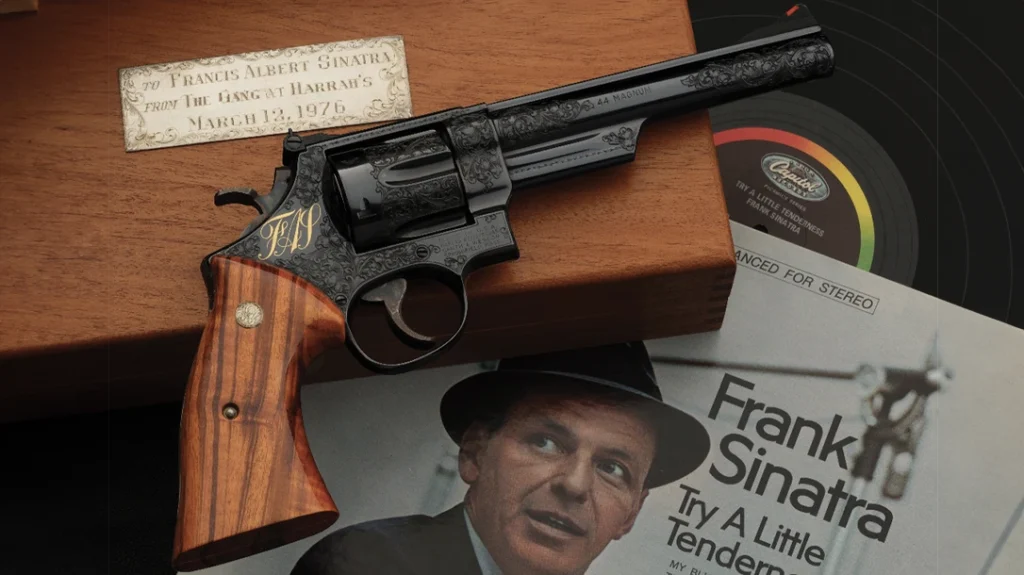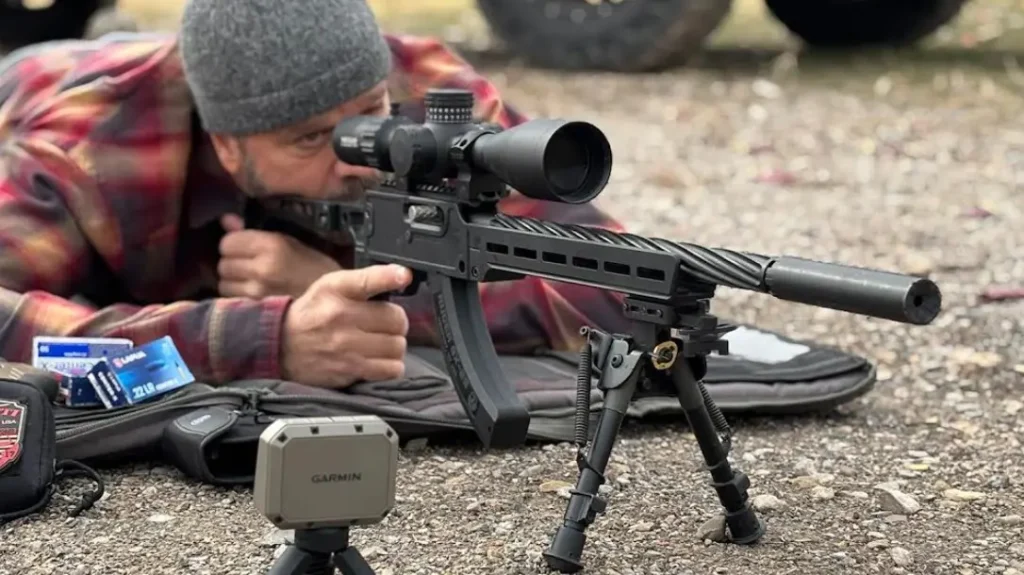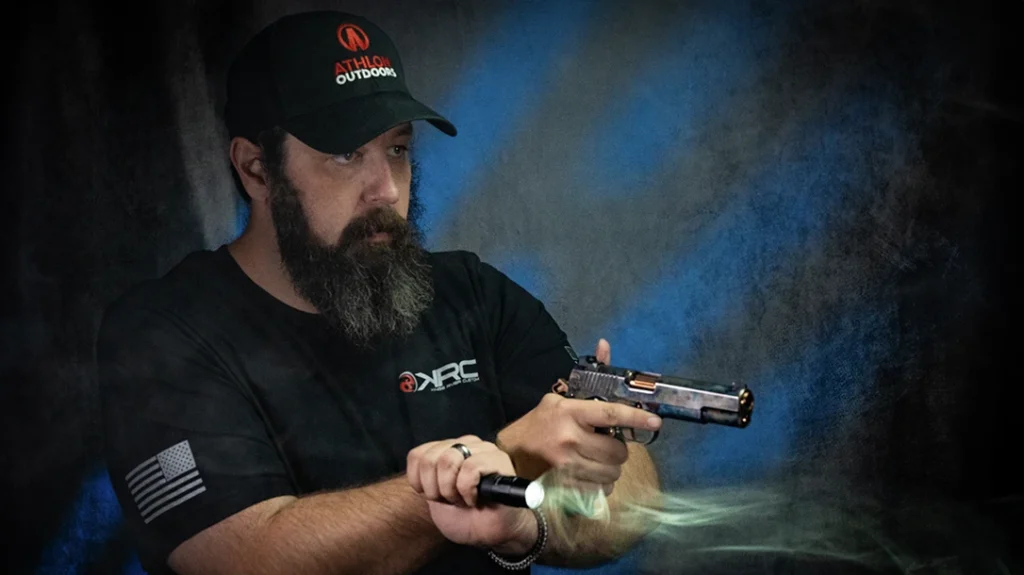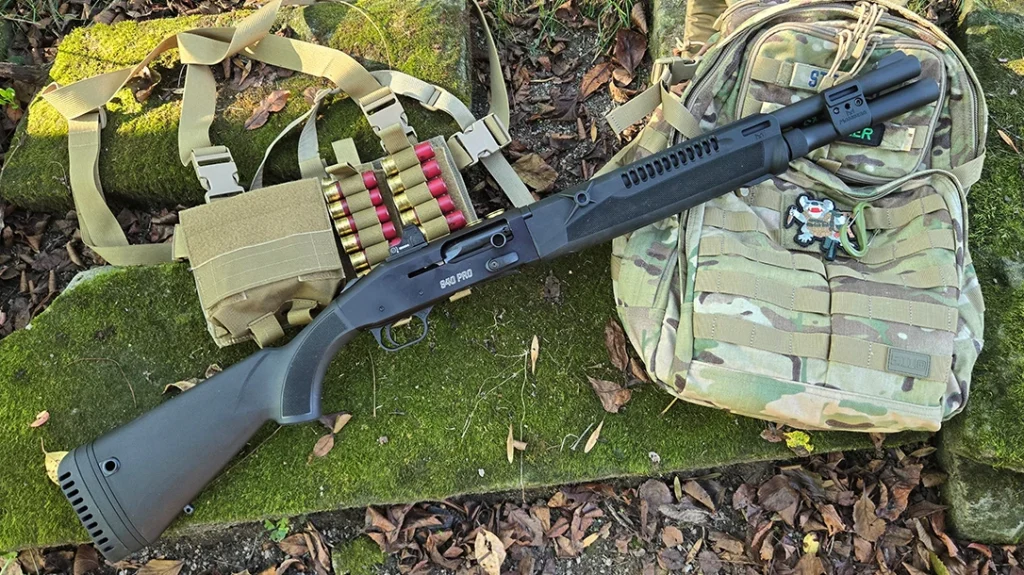Modular design, excellent ergonomics, and simplicity of operation make the Beretta Nano an ideal firearm for concealed carry
Scores of people became familiar with the word “nano” from Star Trek: The Next Generation (1987-1994), where “nanotechnology” mostly applied to the realm of science fiction…then. But like many technologies that sprang from the imagination of Star Trek creator Gene Roddenberry, many were not only relevant but also scientifically possible, just a little bit ahead of their time—like Kirk’s communicator or Yeoman Rand’s ever present electronic notepad. Now we have flip phones and touch pads. Beam me up Scotty.
Nanotechnology is real, and in the 21st century its scientific applications are already present in products that range from cosmetics and communications to scratch-resistant lenses and medical treatments. And the future is only just unfolding in a world of microscopic nano technologies that could have far-reaching and unimaginable possibilities. So what is a nano? In any form of measurement, distance, time, weight, etc., a nano equals 1-billionth, as in nanosecond or nanometer. Beretta wisely chose Nano as the name for its first Micro-Compact 9mm semi-automatic pistol. And like a nano, the new Beretta is small.
Advertisement — Continue Reading Below
Gun Details
The first things you notice about the Nano are its compact dimensions—a mere 5.63 inches in length, 4.17 inches in height, and 0.90 inches in width. The Nano is also light, at 17.67 ounces (empty). The gun’s shape is eye-catching too with a striking configuration to the slide that sharply angles into a tapering contour toward the muzzle, making it a natural for quick re-holstering. The Nano ideally fits the average hand, with a flat baseplate magazine to tuck the little finger under. A large curved triggerguard makes getting to work quick business even wearing a glove, while there is still ample room for a two-handed hold with plenty of clearance behind the muzzle of the 3.07-inch barrel. Ah… but here’s the rub—the new Beretta is not quite as compact as a Kahr PM9 or Ruger LC9 and not even close in size to a Kimber Solo. What the Nano is, without making any comparisons, is one of the most foolproof, easiest to handle and smallest 9mm the famed Italian armsmaker has ever built.

The molded technopolymer shell surrounds the stainless steel fire control sub-chassis containing frame rails, trigger, and striker-firing system
Futuristic sounding names have always been a great marketing tool but in Beretta’s case there is more to it than a catchy epithet. The Nano’s construction is where traditional gun design and future technology theoretically collide. The gun’s one-piece polymer frame is just a molded technopolymer shell surrounding a separate stainless steel fire control sub-chassis containing frame rails, trigger, and striker firing system. This sub-chassis is removable and serial numbered—i.e., it is “the gun” for all intents and legal purposes. This feature will allow Beretta to offer affordable interchangeable exterior configurations, grip styles, optional colors, and specialized frames with built-in accessories like a laser sighting system. As to how many options, how much and how soon, that remains in the future.
Advertisement — Continue Reading Below
Fundamentally the Nano is very down to earth, employing a striker-fired, short recoil system; the latter based on the John M. Browning design, which uses a linkless barrel with a solid camming lug and squared breechblock face to engage the slide. This is combined with a Glock-style toggle trigger safety and automatic striker block, de rigueur with almost every new semi-auto design these days. To help mitigate harsh recoil from the lightweight 9mm, Beretta uses a double recoil spring; one wound around the guide rod and another around the plunger.
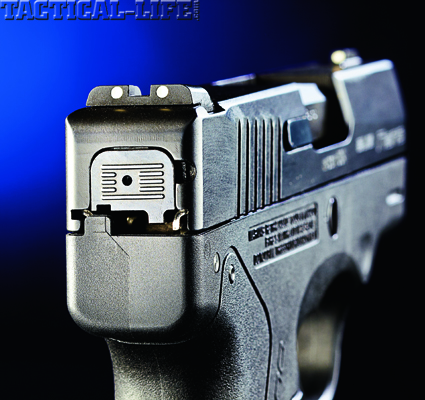
The Nano is simple and straightforward, employing a striker-fired, short recoil system. Rear sights are windage adjustable white dots.
The only external indications of the gun’s condition are the action of the automatic striker block, which rises up though an opening in the top of the slide when the trigger is drawn to the rear, and a loaded chamber indicator, which is almost too subtle to notice. When a round is chambered the extractor protrudes just slightly outward from the slide. Other than that, the gun has no obvious tells; the trigger position appears the same (fully forward, toggle extended) whether the slide has been cycled or not, while a Glock, for example, has two clearly different trigger positions between “at the ready” and “discharged.” The Nano also has no external (manual) safety or even a slide release lever. The design is as uncomplicated as possible. All it takes to strip the first round from a magazine on the reload is pulling the slide slightly to the rear and letting go, which basically makes it ambidextrous. In a pinch (one-handed) the slide can also be released by lightly pushing its front edge against any hard surface and you’re good to go. There is also an easily depressed magazine release that is reversible, so southpaws don’t have to go wanting, and the Nano does not use a magazine disconnect—it will discharge a chambered round with the magazine removed.
Advertisement — Continue Reading Below
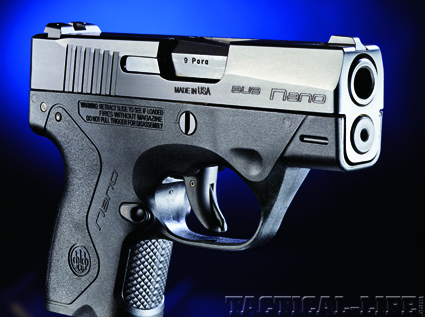
Beretta’s use of a sub-chassis with a removable exterior polymer shell will allow affordable interchangeable exterior configurations.
The matte black Pronox finished slide is fitted with a windage adjustable white dot rear sight that is locked in place by two standard 1.3mm hex head set screws. The white dot front sight is uniquely locked into a horizontal dovetailed channel with a single 1.3mm hex head set screw, making both front and rear easily interchangeable at some point. The ease with which the Nano’s frame can be interchanged is just slightly more time intensive (more parts to deal with) than field stripping the Nano, which, after removing the magazine and clearing the gun, comes apart by simply depressing the striker deactivation button on the right side of the grip frame with the tip of a pen and then rotating the takedown screw (also on the right side of the frame just above the trigger) one quarter turn counter-clockwise. You can do the latter without any tools; the edge of a shell casing is all you need. The slide, barrel, recoil spring and guide rod assembly can then be pulled forward off the subframe. Reassembly is faster as the takedown screw automatically resets and locks itself when the slide is replaced. It’s quick and easy and the first step can actually be skipped (after ensuring the gun is empty) by simply pulling the trigger, as one would do field stripping a Glock.
Removing the outer frame shell to allow the retrofit of different frames requires only a small punch tool and the supplied Beretta parts tube in which to store nine pieces that will be detached (some fall out of the sub-chassis as it is removed) in the process. The removal of the sub-chassis is fully detailed in the instruction manual and requires no gunsmithing tools or special training. This is sure to become one of the Nano’s most significant features.
Advertisement — Continue Reading Below
Range Time
The trade-off with a lightweight polymer frame and a stainless steel slide is that the Nano is a bit nose heavy, which is not bad for recoil management but it initially feels more unbalanced in the hand than expected. I also found the trigger pull quite long at 0.75 inches with notable stacking, however, since this is a striker-fired design the trigger does the work, similar to a double-action-only revolver, so the lengthy pull is to be expected. On the plus side trigger reset is quick, which makes double taps a breeze. Unfortunately, the Nano’s DAO design does not allow for second-strike capability should a round fail to fire, but as noted previously, it only takes a very slight pull on the slide to reset the trigger. However, at that point it is probably best to simply clear it and cycle in a new round. The shape of the slide and the deep rear serrations contribute to making slide cycling quick work with the off-hand. The Nano’s contour also places the upper frame and slide well over the web of the shooting hand despite having a relatively low bore axis.
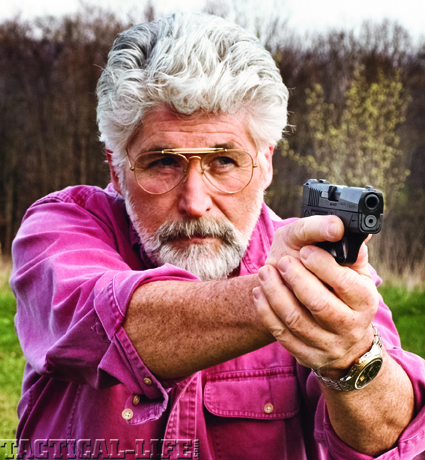
Firing offhand from 45 feet at a B-27 silhouette target, the author managed tight groups in the 2-inch and less range with all ammo tested
Advertisement — Continue Reading Below
On the Beretta test range during the gun’s debut in January 2012, I found the Nano accurate at 50 feet firing on steel targets. Every shot rang the bell so there was no doubt about hitting the mark. As for measured accuracy my latest range test conducted at a distance of 15 yards (45 feet) proved the Nano a very capable handgun. Using a two-handed hold and Weaver stance, the best five-shot groups—fired at one-second intervals at a B-27 silhouette target—measured 1.5 inches with Hornady Critical Defense 115-grain FTX traveling downrange at 1,073 feet per second (fps), with all rounds grouping at the bottom right of the 10 ring. With CorBon 9mm +P 115-grain DPX flying at 1,130 fps average, the best grouping measured 1.95 inches in the 9-ring at lower left, with three rounds almost overlapping. A second string was fired with CorBon, which grouped in the 9-ring at 3 o’clock, measuring 2.0 inches. The heaviest load tested in the Nano was Federal Premium Personal Defense 9mm 147-grain Hydra-Shok JHP, which clocked 899 fps average and grouped five rounds at 2.10 inches all in the 10 and X. Recoil was lively with all three, a bit more so with the hot +P CorBon DPX. Heavy recoil, however, is to be expected with any lightweight ultra compact 9mm. The Nano is neither better nor worse than any other.
Final Notes
While the Nano’s concept isn’t exactly a clean sheet of paper design (if you consider the Ruger LCR), for a semi-auto it is cutting edge technology—not just for Beretta but for semi-autopistol engineering as a whole. While the Nano isn’t as small as some of the competition, compared to their design and construction, it is light years ahead. As a defensive sidearm for concealed carry the new Beretta couldn’t be any easier to use without being a revolver. Considering the technology at hand and what the Nano doesn’t have, such as a slide release, a manual safety, etc., what this design brings to the table first and foremost is future potential. The Nano 9mm is only the beginning, not the end and what we are all awaiting next is a Nano chambered in .40 S&W. As Captain Jean Luc Picard would have said on Star Trek TNG, “Make it so.” Find out more by visiting berettanano.com or by calling 800-929-2901.
Advertisement — Continue Reading Below

